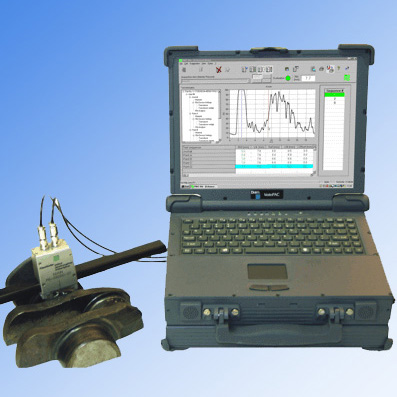

P3121 RhT 4-Channel Hardened Layer Thickness Test Instrument is used to nondestructively evaluate and measure the case depth (Rht) of induction-heated parts. The 4-channel cased depth test instrument is an upgraded version of the single-channel instrument.
Inquiry Online Sales Manager: Mr Li
Sales Manager: Mr LiInduction hardening transforms the near-surface structure to martensite, which is much harder than the prior structure. There is a direct correlation between hardness and wear resistance. The wear resistance of a part increases significantly with induction hardening. Induction hardening also increases Strength & Fatigue Life due to the Soft Core & Residual Compressive Stress at the Surface. Typical Hardened Layer Thickness is deeper on average than processes such as carburizing, carbonitriding, and various forms of nitriding performed at sub-critical temperatures.

|

|
Reference pictures of induction hardening process
The ultrasonic backscattering technique is used to nondestructively evaluate and measure the RhT - Hardened Layer Thickness(case depth) of induction-heated parts.
This technique allows the detection of the transition between different polycrystalline structures due to their variation in backscattering characteristics. Acoustic backscattering increases with the increase of the particle (grain) size because the ultrasonic dispersion coefficient is proportional to the third power of the effective particle size if the condition “wavelength larger than particle size” is true. Induction hardening usually creates a fine-grained, hardened, near-surface structure that varies from the unhardened base material structure particularly with regard to particle size. While the hardened near-surface structure is very transparent to ultrasonic waves, the coarse-grained base material structures exhibit increased ultrasonic backscattering, which results in usable signal amplitudes suitable for display.
The case depth is measured by evaluating the transit time of the ultrasonic pulse when entering the material surface to the case-to-base material interface and the case depth (Rht) is computed without additional calibrations using the given sound velocity of carbon steel and the angle of incidence case.
A sharp hardness gradient in the transition area provides excellent ultrasonic data that agree very well with the Rht values determined by destructive methods, e.g., Vickers micro-hardness testing. This technique is applicable for case depths of 1.0mm (0.040”) and larger and can be used to measure the case depth in complex contoured parts, e.g., crankshaft fillets and journal radii. The reproducbility of the ultrasonic case depth data is typically within +2% of the actual case depth.
The 4-channel cased depth test instrument is an upgraded version of the single-channel instrument. The instrument features an industrial grade notebook, desktop, or rack-mount PC and analog transmitter with four receiving stages. The data acquisition software automatically switches up to four transducers (channels) assigned by the software settings for test locations with varying surface geometry. The software is Windows based and can be customized to individual user requirements. The ultrasonic transducers (20 MHz) and polystyrene wedges, custom-fitted to the surface geometry as specified by the purchaser, are contained in a rugged housing.
• The software consists of several individual modules for inspection setup (master record and databases for parts, transducers and wedges, test personnel, instrument and analysis settings, etc.), testing, and exporting.
• Software designed for extensive database utilization, available in German and English.
• Storage of all significant test data.
• Integrated form generator for creating custom-designed inspection reports.
Manual (ultrasonic) Hardened Layer Thickness(case depth) measurement on heat-treated parts such as crankshafts, camshaft lobes, cam rings, bearings, drive shafts and many more.

|

|

|
Typical induction hardened parts to be tested of hardened layer thickness
For more details, please contact LAB GAGES directly.

311,Building 5,No.81,Meiyue Road,Waigaoqiao Free Trade Zone,Pudong,Shanghai,China
amy@labgages.com
021-50473900


About LAB | Cooperative Brand | Contact us | Sitemap

沪公网安备 31011502000213号

 沪ICP备12021537号-1
©2012-2024 LAB GAGES
沪ICP备12021537号-1
©2012-2024 LAB GAGES